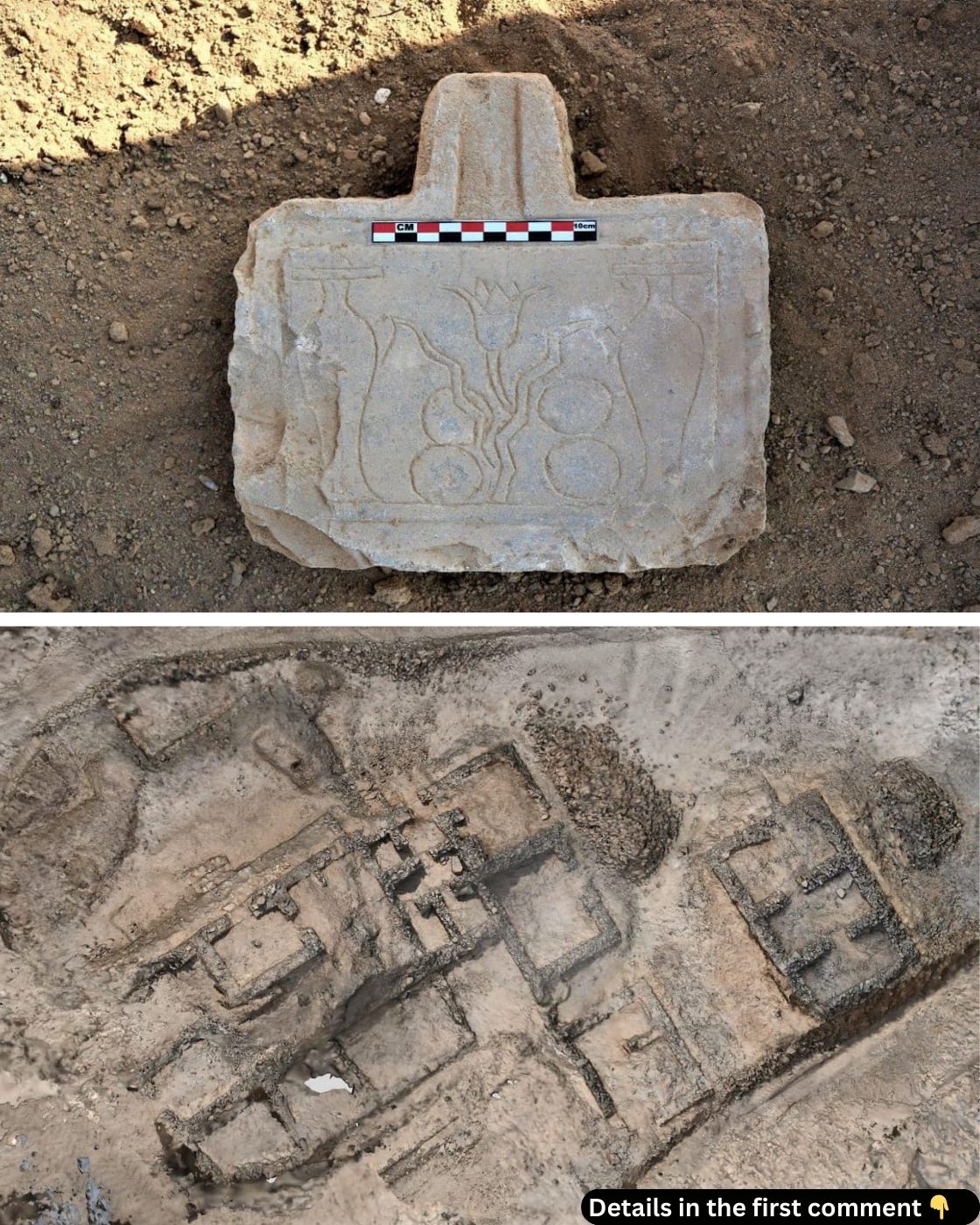In the heart of Egypt’s Eastern Desert, a remarkable discovery has surfaced—an ancient gold mining camp that dates back over 3,000 years. This finding, part of an extensive archaeological project, offers a rare glimpse into the technological and social life of the ancient Egyptians. From advanced gold extraction techniques to religious practices intertwined with daily labor, the site promises to deepen our understanding of Egypt’s rich history as a gold-producing empire.
Location and Context of the Mining Camp
The gold mining camp was discovered as part of the Revival of the Ancient Gold City project, a massive archaeological initiative that took place over the span of two years. The site is located in the southeastern part of Egypt, within the Red Sea province, in an area known for its rich mineral deposits. The excavation was conducted by the Egyptian Ministry of Tourism and Antiquities, in collaboration with the Supreme Council of Antiquities and local mining authorities. The goal of the project was to not only uncover the ancient camp but also to ensure the protection of this invaluable heritage site from modern mining activities that are still taking place nearby.
The Sakari Mountain region, with its proximity to ancient Egypt’s significant gold resources, was a vital area for gold production throughout antiquity. The discovery of this mining camp has provided archaeologists with a deeper understanding of how gold was extracted from the earth and processed for use in royal jewelry, ceremonial items, and as a form of currency. It is clear from the excavation that the region was highly regarded for its ability to produce the precious metal, further cementing Egypt’s reputation as a dominant force in ancient gold production.
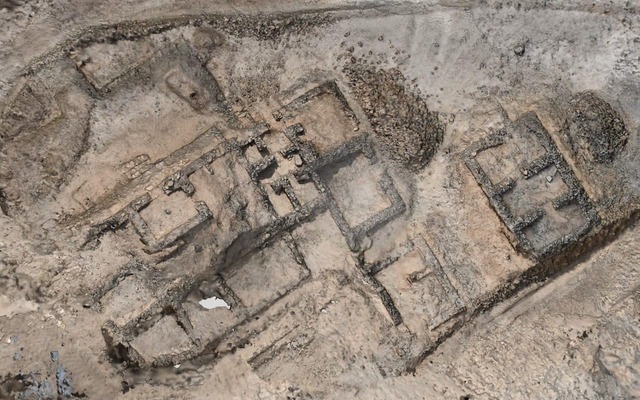
Video
Watch the video to see archaeologists uncover treasures from a 3,000-year-old gold mine in Egypt! Don’t miss this amazing discovery and its historical significance.
Excavations and Findings
The most intriguing aspect of this discovery is the structure of the mining camp itself, which was found to be perfectly organized. The site revealed a comprehensive infrastructure designed for gold extraction and processing. The remains of specialized factories for crushing and grinding quartz, the material from which gold was extracted, were unearthed. Archaeologists uncovered clay furnaces used for smelting the metal, along with filtration and sedimentation basins, which were used to separate gold particles from the crushed quartz. This evidence shows the meticulous and highly organized process used to refine gold, providing new insights into the technological advances of ancient Egyptian society.
In addition to the gold extraction facilities, the excavation revealed a wealth of artifacts that give a glimpse into the daily life of the ancient miners. Residential areas, workshops, and religious buildings have been identified, highlighting the multifaceted nature of the community that lived and worked here. One of the most fascinating discoveries was the remains of temples dedicated to religious worship, which suggests that gold mining was not only an economic activity but also an integral part of spiritual life.

The site also contained a number of administrative buildings, which point to the highly organized structure of the mining camp, with its own system of governance and oversight. This discovery emphasizes how the ancient Egyptians utilized the gold extracted from these regions to fuel their economy and bolster their political power.
Artifacts and Cultural Significance
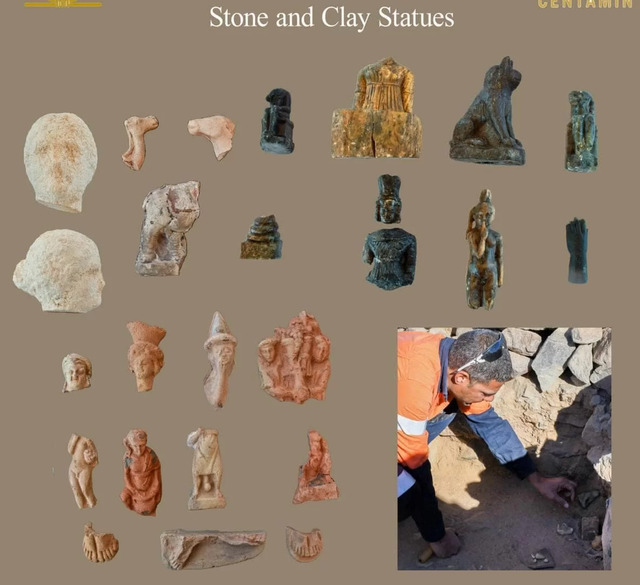
Among the most exciting finds from the excavation are the numerous artifacts that have been uncovered. A large collection of ostraca, or fragments of pottery and stone with inscriptions, was found at the site. These texts, written in hieroglyphic, demotic, and Greek scripts, shed light on the linguistic diversity of the period and the complexity of the administrative and cultural systems in place. These inscriptions provide a wealth of information about the workings of the mining camp, its relationship with other regions, and the social hierarchy that governed it.
In addition to the ostraca, a range of other artifacts were discovered, including bronze coins from the Ptolemaic dynasty, terracotta figurines, and small stone sculptures. These figurines depict both human and animal forms, including representations of deities such as Bastet and Harpocrates, showcasing the blend of religious and everyday life in the mining camp. The presence of offering tables from the Ptolemaic period further emphasizes the importance of religious rituals in this society, with the miners possibly offering sacrifices to the gods in hopes of ensuring a successful harvest of gold.
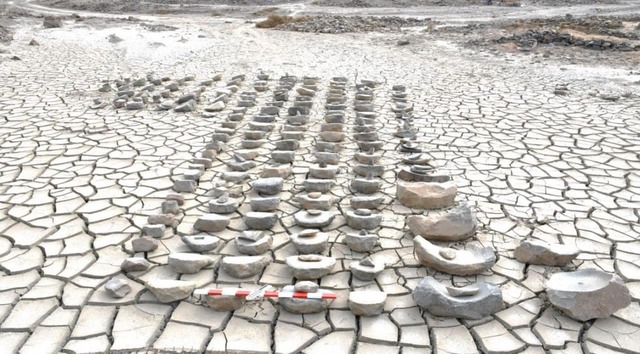
Ceramic vessels of various shapes and sizes were also uncovered, used in daily life for storing food, perfumes, and medicines. The discovery of these objects speaks to the multifaceted nature of the mining camp, where both economic and social activities were intertwined. The ornate decorations and functional uses of these artifacts reveal the intricate craftsmanship and aesthetic sensibilities of the people who lived and worked in the camp.
Technological and Social Insights
The gold extraction methods used at the mining camp provide important insights into the technological capabilities of the ancient Egyptians. The use of sophisticated equipment for crushing and grinding quartz, combined with the advanced smelting techniques, demonstrates a high level of craftsmanship and engineering. The meticulous nature of the process reflects the importance of gold in Egyptian society, not only as a valuable resource but also as a symbol of divine power and royal authority.
The excavation also sheds light on the social structure of the mining communities. The presence of temples, workshops, and administrative buildings indicates that the mining camp was a hub of both religious and economic activity. The integration of these elements suggests a well-organized society, with a clear division of labor and a high degree of social stratification. The artifacts and inscriptions uncovered at the site point to a complex system of governance and resource management, reflecting the ability of the ancient Egyptians to sustain large-scale industrial operations over extended periods.
Preservation Efforts and Public Engagement
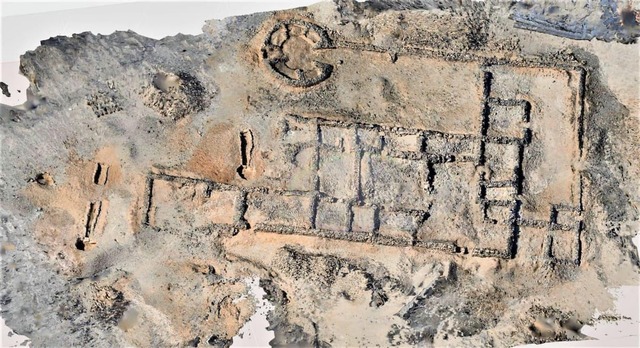
The efforts to preserve and document the mining camp are of paramount importance. A replica of the mining camp has been created in a six-acre area, where the main structures from the excavation have been reconstructed. This replica provides visitors with a tangible sense of what life was like in the ancient gold mining camp, offering a fascinating glimpse into Egypt’s industrial past.
In addition to the replica, a modern visitor center has been established, equipped with high-definition screens displaying detailed images of the excavation process and the most significant findings. Informational panels narrate the history of the site and its importance within the context of gold mining in Egypt, allowing the public to engage with the history of the site in an interactive and informative way.
Video
Watch the video to learn how Tutankhamun got his gold in Lost Treasures of Egypt! Don’t miss this fascinating insight into the young pharaoh’s wealth and legacy.
Conclusion
The discovery of the ancient gold mining camp in the Sakari Mountain region is a remarkable achievement in the field of archaeology. Not only does it reveal the advanced technological techniques used by the ancient Egyptians to extract and process gold, but it also provides invaluable insights into the social, religious, and economic structures of the time. This discovery further reinforces Egypt’s importance as a center for gold production and highlights the sophisticated nature of ancient Egyptian society. As excavation efforts continue and new artifacts are uncovered, this site will undoubtedly continue to contribute to our understanding of ancient Egypt’s rich and complex history.
